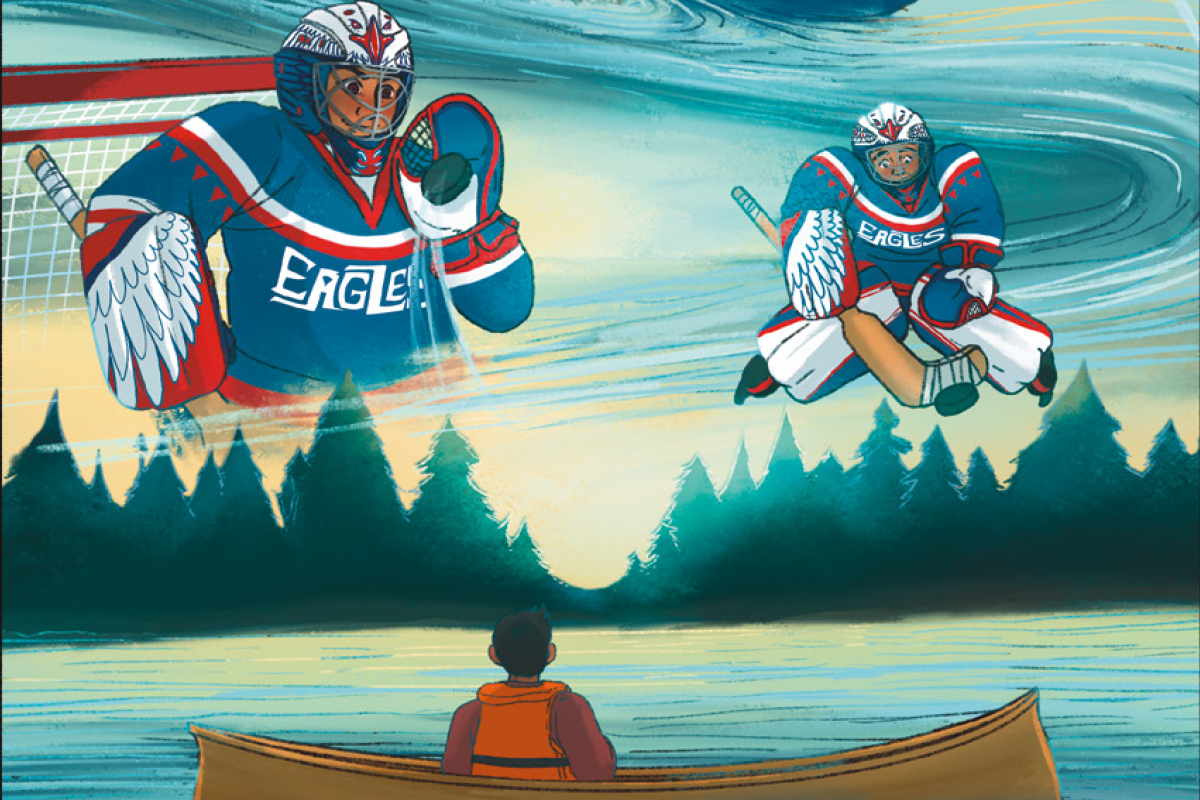
Graphic novel focuses on homophobia in Indigenous sport
A new graphic novel created from research conducted by the College of Nursing, Rady Faculty of Health Sciences looks at gender and sexuality through a Cree lens, with a focus on toxic masculinity and homophobia in sport.
Funded by the Winnipeg Suicide Prevention Network, Between the Pipes tells the story of Chase, a 13-year-old Indigenous hockey goalie coming to terms with his sexuality. He realizes he is gay and is being bullied by his teammates, but he finds support through friends, his Kookum and a two-spirit mentor.
The story was influenced by the lived experiences of 2SLGBTQI+ Manitobans from a series of interviews and focus groups conducted by Dr. Elaine Mordoch, associate professor at the College of Nursing. The project was led by Mordoch and Elder Albert McLeod, one of the founders of Two-Spirited People of Manitoba and an activist for over 30 years.
“We had nine participants – three elders, three two-spirit people who were parenting, and three younger two-spirit people in their twenties. They all had stories of trauma and harsh experiences during their youth. These stories were balanced with a strong message of hope for today’s youth that obstacles can be overcome and that there are helpers along your journey,” Mordoch said.
Mordoch first met McLeod at a Winnipeg Suicide Prevention Network event in 2016, where McLeod spoke about two-spirit people. The pair began working together later that year and decided on sharing their research through a graphic novel in 2019. It was not a format either had worked in before.
“We always had comic books as kids…but the way they write them now and the messages behind them, I wasn’t really familiar with. It was interesting to explore that,” Mordoch said.
McLeod said hockey was chosen as the backdrop of the story because it is a popular sport in many Indigenous communities. Heteronormativity, he said, is common in sports, especially among males.
“It’s very much about that sort of masculine identity as being heterosexual. We wanted to break that narrative.”
Mordoch said the story is appropriate for sensitive discussions around sexual identity, mental health and life promotion strategies. While it is aimed at Indigenous youth ages 12-15, the identified issues of being different and “not fitting in” are universal. An educational guide for teachers who wish to use the graphic novel in their classrooms will soon be available from the Winnipeg-based publisher, Highwater Press.
The publisher also helped develop the book by teaming Mordoch and McLeod with non-binary Ojibwe artist Alice RL and Swampy Cree writer Sonya Ballantyne, who helped with story structure and developing the youth perspective.
RL’s work also includes video game art, traditional illustration and graphic design. They are a graduate of UM’s School of Art (bachelor of fine arts) and digital media design at Red River College Polytech.
Ballantyne is an accomplished filmmaker with awards from the Gimli Film Festival and Vancouver International Film Festival. Her documentary feature, The Death Tour, debuted at the Slamdance Film Festival in Park City, Utah last year.
The book will officially be published as of Sept. 10 as part of Let’s Plant a Forest of Hope, a World Suicide Prevention Day event at Whittier Park, beginning at 10:00 a.m. An official launch by the publisher will take place at McNally Robinson on October 4.






